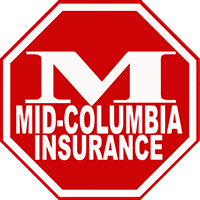What is high-risk auto insurance?
High-risk auto insurance — or nonstandard auto insurance — covers individuals that insurance providers consider to carry an elevated risk of operating a vehicle, usually due to a poor driving record. While high-risk auto insurance policies come with higher premiums, drivers can improve their record and reduce their premium over time.
If your driving record has blemishes on it—from speeding tickets to a DUI—you might require high-risk auto insurance. Ultimately, the difference between qualifying for high-risk or standard auto insurance comes down to your likelihood of filing insurance claims or being liable for traffic violations, based on your prior driving record.
While your premiums increase as a high-risk driver, you can reduce your monthly costs and even shed the high-risk classification altogether. Learn what high-risk auto insurance is and how to lower your costs.
What is a high-risk driver?
Insurers classify a high-risk driver as someone who carries a greater risk when operating a vehicle, therefore increasing their likelihood of filing a claim, causing an accident, or committing a traffic violation. While there are no set rules for who’s considered high-risk, there are many reasons drivers can be deemed high-risk—from minor traffic violations such as speeding tickets to major violations like DUIs.
How long are you considered a high-risk driver?
There’s no universal timetable for being a high-risk driver—each driver carries their own unique designation based on their own record. If you have multiple serious violations, you’ll likely be considered a high-risk driver for a longer period than someone with minor violations.
Violations add points to your driving record. These points are typically removed from your record after a certain amount of time. If you maintain a clean driving record over time, points will eventually fall off your record and you’ll no longer require high-risk auto insurance.
Why would you need high-risk auto insurance?
There are many reasons you could require high-risk auto insurance, including:
- DUI conviction: If you get convicted of a major violation—such as a DUI—it’ll likely affect your insurance rate for at least three years.
- Driving with a suspended license: A violation such as a conviction for driving with a suspended license will likely impact your insurance rates for at least three years.
- Hit-and-run conviction: If you’re convicted of a hit-and-run, you can expect the violation to potentially affect your insurance rate for at least three years.
- At-fault accidents: When you’re at fault for an accident—meaning your auto insurance provider is responsible for reimbursing drivers for resulting injuries or property damage—you increase your risk as a driver. It’s important to note that you’re usually considered to be at fault if you file a claim for a single-car collision.
- Multiple speeding tickets: Every speeding ticket results in points on your driving record, and every point increases the likelihood of being considered a high-risk driver. Depending on the state you live in, you may have the option to take a defensive driving course to avoid having points from your ticket added to your record.
- Bad credit history: When you apply for coverage, most insurers will review your credit history to determine your reliability to make payments and avoid a lapse in your insurance coverage. Bad credit may result in the need for high-risk auto insurance.
- Insurance coverage history: Having a lapse in your auto insurance will increase your risk as a driver. Driving without insurance is a serious violation that not only will damage your driving record, but could lead to costly fines, having your car impounded, or even potentially losing your license.
How much does high-risk auto insurance cost?
Rates for high-risk auto insurance will vary based on your unique circumstances. The best course of action to determine the cost is to request a free online quote or speak to an agent near you.
Where can you find high-risk auto insurance?
While not all insurance providers offer high-risk or nonstandard auto insurance, Dairyland offers coverage to high-risk drivers, including DUI insurance and SR22 insurance.
How can you lower your high-risk auto insurance costs?
Fortunately, there are ways to reduce coverage costs and eventually lose your high-risk designation completely:
- Improve your credit: Since your credit score is related to your risk as a customer, building your credit score over time will lower your rate.
- Maintain good driving habits: Since your high-risk status is largely based on your driving record, one of the most important steps for lowering your insurance costs is driving safely and avoiding accidents, helping you remove points along the way.
- Keep consistent coverage: If you have a registered vehicle, you should always have car insurance. Even if you don’t own a vehicle, you should consider a broadform insurance policy. Many insurance companies generally regard drivers without six months of continuous coverage to be high-risk drivers. Additionally, a non-owner policy will help protect you if you’re found to be at fault in an accident while driving a vehicle you don’t own.
- Use public transportation: If you have access to modes of public transportation such as a bus or train, use them for trips like your daily commute. Especially in higher-traffic areas, this will help you avoid some of the most common areas and times of day for accidents or traffic violations.
- Shop around and compare prices: Just like you would for any major purchase, make sure you do your research and continuously evaluate the cost of your policy.
As a high-risk driver, it’s important to understand everything that impacts your car insurance and how you can work toward reducing the cost of your high-risk auto insurance policy.
If you’re a driver searching for the best high-risk auto insurance, find the right plan for you today by receiving a free online quote or call us at (509)783-5600.
How long am I considered a high-risk driver?
The designation is entirely dependent on your driving record. If you continue to get tickets, cause accidents, and stick to old habits, then it’ll be difficult to shed that designation. However, if you have a squeaky-clean record moving forward, you should be able to move out of the high-risk driver designation over time. In the meantime, here are some ways you can get cheap car insurance to help with the higher costs that can come with high-risk insurance.

